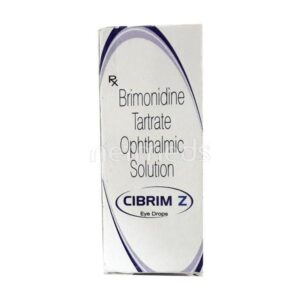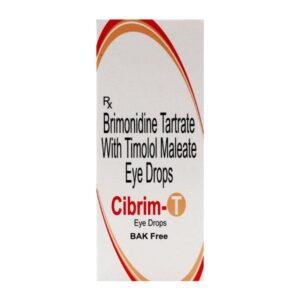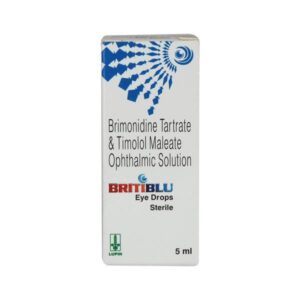BRIMONIDINE + TIMOLOL MALEATE
Brimonidine: Brimonidine is a medication that is used to treat open-angle glaucoma and ocular hypertension. It belongs to a class of drugs called alpha-2 adrenergic agonists.
Brimonidine works by reducing the amount of fluid inside the eye, thus lowering the pressure inside the eye (intraocular pressure). It does this by stimulating alpha-2 adrenergic receptors, which leads to a decrease in the production of aqueous humor (the fluid inside the eye) and an increase in the outflow of aqueous humor.
The usual recommended dose of brimonidine for adults is one drop in the affected eye(s) three times daily, approximately 8 hours apart. It is important to follow the dosage instructions provided by the healthcare professional and not to use more or less of the drug without their guidance.
Common side effects of brimonidine include ocular hyperemia (redness of the eye), allergic conjunctivitis (eye itching or irritation), fatigue, headache, dry mouth, and blurred vision. Some individuals may also experience eye discomfort, foreign body sensation, allergic reaction, or darkening of the eyelid or skin around the eye.
It is important to note that brimonidine may interact with certain medications, such as monoamine oxidase inhibitors (MAOIs) and tricyclic antidepressants. Thus, it is necessary to inform the healthcare professional about all the medications being taken to avoid potential drug interactions.
Overall, brimonidine is an effective medication for reducing intraocular pressure and is commonly used in the treatment of glaucoma and ocular hypertension. However, it is essential to be aware of the potential side effects and to consult a healthcare professional for proper dosing and usage guidance.
Timolol Maleate: Timolol Maleate is a beta-blocker medication primarily used to treat high blood pressure (hypertension) and certain heart conditions such as angina (chest pain) and heart rhythm disorders. It is also used to manage glaucoma, a group of eye conditions that result in increased intraocular pressure.
The mechanism of action of Timolol Maleate involves blocking the action of certain natural substances like adrenaline on beta receptors in the heart and blood vessels. By doing so, it reduces the heart rate, blood pressure, and the workload on the heart, leading to decreased oxygen demand by the heart muscle. In the case of glaucoma, Timolol Maleate reduces the production of aqueous humor in the eye, thereby lowering intraocular pressure.
The drug is available in multiple forms, including oral tablets, eye drops, and gel-forming solutions for ocular use. The dose and frequency of Timolol Maleate depend on the condition being treated:
For hypertension and heart conditions, the typical starting dose for oral tablets ranges from 10-20 mg, taken once or twice daily. The dose may be adjusted based on individual response.
For glaucoma, Timolol Maleate eye drops are commonly used. The usual dose is one drop in the affected eye(s) once or twice daily. It may be used alone or in combination with other eye medications as prescribed by the doctor.
Timolol Maleate may cause some common side effects, including:
1. Cardiovascular effects: Slow heart rate, low blood pressure, worsening of heart failure symptoms.
2. Respiratory effects: Difficulty breathing, bronchospasm (especially in patients with asthma or chronic obstructive pulmonary disease – COPD).
3. Ocular effects: Dry eyes, blurred vision, eye discomfort, or allergic reactions in rare cases.
4. Central nervous system (CNS) effects: Dizziness, fatigue, depression, confusion, or sleep disturbances.
5. Gastrointestinal effects: Nausea, diarrhea, or abdominal discomfort.
It is important to note that this is not an exhaustive list of side effects, and some individuals may experience other reactions. It is crucial to discuss any concerns or potential side effects with a healthcare professional before starting Timolol Maleate.



